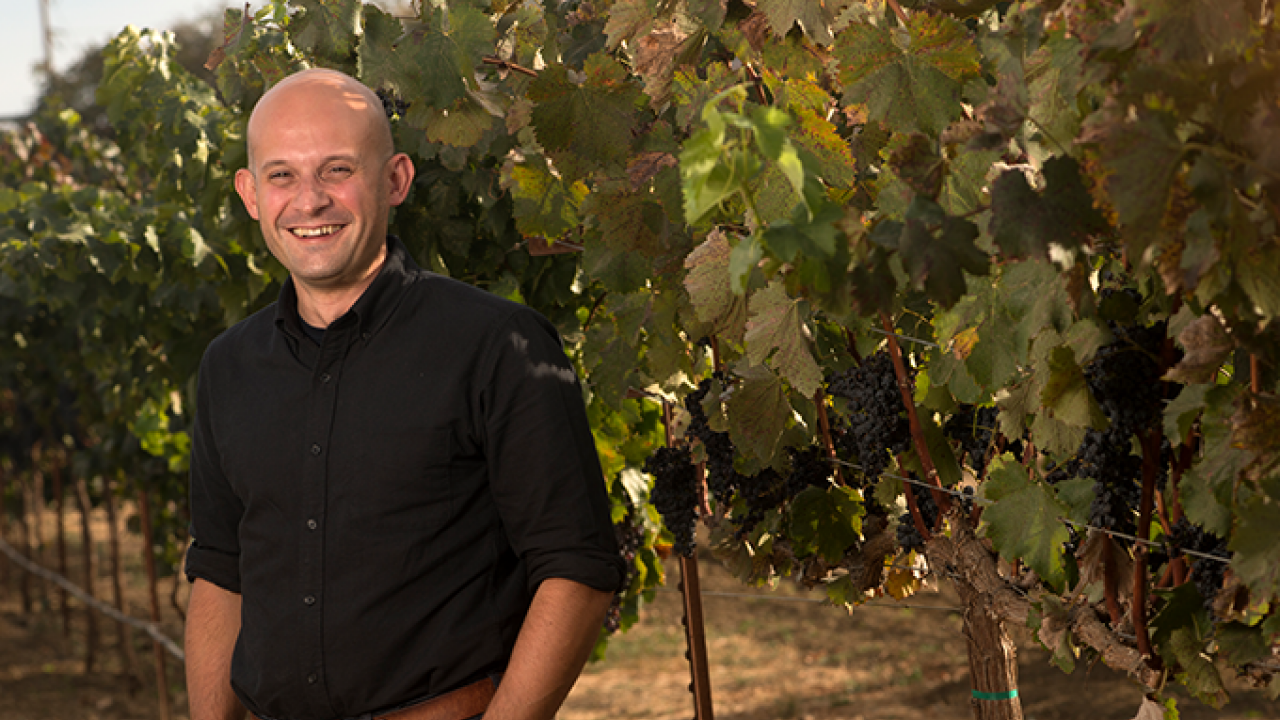
Gathering grapes
That’s what UC Irvine evolutionary biologist Brandon Gaut and UC Davis plant biologist Dario Cantu discovered in a study recently published in the journal Proceedings of the National Academies of Sciences. The scientists compared the sequenced genomes of wild and domesticated Eurasian grapes and found that people may have been eating grapes 15,000 years before they domesticated the fruit as an agricultural crop.
The findings support the theory that humans had a big effect on ecosystems even before the onset of organized agriculture. The research can also aid crop breeders as they develop improved, disease-resistant grapes.
Grapes are currently the most economically important horticultural crop in the world. But Cantu and the team found that populations of the fruit steadily decreased until domestication, when grapes began to be grown and harvested for wine. The long decline could be due to natural processes, or mean that humans began managing natural populations long before they were domesticated.
“Like most plants, grapes are typically considered to have been cultivated around 7,000 to 10,000 years ago, but our work suggests that human involvement with grapes may precede these dates,” said UC Irvine’s Brandon Gaut. “The data indicate that humans gathered grapes in the wild for centuries before cultivating them.”
The study also suggests that the altering of several important genes during domestication was a key turning point for the fruit. These genes included some involved in sex determination and others related primarily to the production of sugar. These changes helped define grapes as we know them today and probably contributed to the spreading of the crop throughout the ancient world.
“Our research showed, for the first time, how people thousands of years ago selected for genes that potentially affected traits like the softness and sweetness of grape berries,” Cantu said.
Researchers also discovered that modern grape genomes contain more potentially harmful mutations than did the fruit’s wild ancestors. These accumulate due to clonal propagation, which is reproduction by multiplication of genetically identical copies of individual plants.
Grapes have been reproduced by clonal propagation for centuries, as it allows genetically identical cabernet sauvignon or chardonnay varieties, for example, to be grown around the globe. The identification of these potentially harmful mutations may prove useful to grape breeders.
Yongfeng Zhou and Jaleal Sanjak of UCI and Melanie Massonnet of UC Davis also contributed to the study, which was supported, in part, by the Albert & Elaine Borchard Foundation, J. Lohr Vineyards & Wines, E. & J. Gallo Winery and the Louis P. Martini endowment in Viticulture.
Media contact(s)
Diane Nelson, College of Agricultural and Environmental Sciences Dean's Office, 530-752-1969, email
Dario Cantu, Department of Viticulture and Enology, 530-752-2929, email
Tom Vasich, University of California at Irvine, 949-824-6455, email